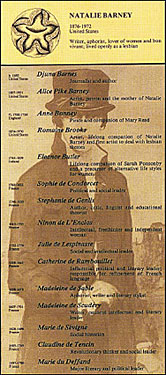
 In this Encounter, students are asked to pay careful attention to the way gender roles function in their daily lives. They consider their membership in what can be called "shared-interest" communities—geographical, family, ethnic/racial, religious, and recreational communities, for example—and write about the part that gender plays in each. Students are provided a handout with a series of prompts and a worksheet in which they "map" their gender identity.
In this Encounter, students are asked to pay careful attention to the way gender roles function in their daily lives. They consider their membership in what can be called "shared-interest" communities—geographical, family, ethnic/racial, religious, and recreational communities, for example—and write about the part that gender plays in each. Students are provided a handout with a series of prompts and a worksheet in which they "map" their gender identity. In order to comprehend the social context in which The Dinner Party was created and understood, it is important for students to understand the pervasive and restrictive power of gender roles and stereotypes. Students need to recognize how such socially constructed ideas have functioned to keep girls and boys and women and men from exercising their full human potential. If students reflect upon the way gender roles impact their own personal lives, they will be better able to understand how the achievements of women in history could be ignored or erased. With this new recognition, they will be better prepared to understand the historical significance of The Dinner Party. The Dinner Party reminds us to be vigilant—to be on the watch for attempts to undervalue contributions of those who step outside the roles prescribed for them. To view the entire Encounter, download the PDF for Encounter 4: Mapping Gender Identity by clicking on the buttons below.

